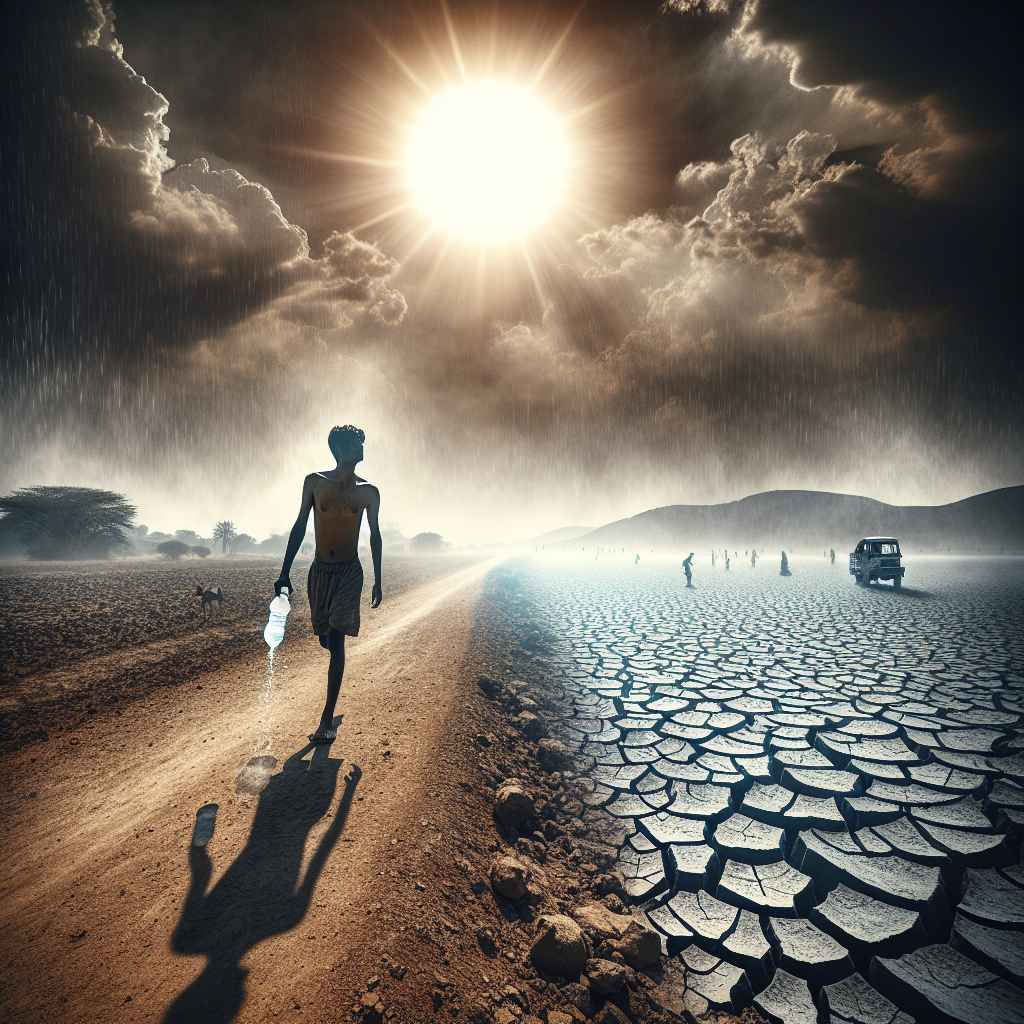India's Sizzling Heat Wave: A Looming Crisis
India faces an intense heatwave with temperatures soaring to 48°C in Rajasthan. The heat strains power and water supply, with predictions of further temperature rises. Vulnerable groups, such as outdoor workers, elderly, and children, are most affected, leading to health risks and economic losses.

- Country:
- India
The blistering heat sweeping across large swathes of India continued unabated on Wednesday, with the mercury surging to 48 degrees Celsius in Rajasthan's Barmer, the highest temperature recorded in the country this year so far.
Water levels in the Delhi stretch of the Yamuna River dropped amid the sweltering heat, affecting water supply.
The city also saw power demand reaching a record 8,000 megawatts, with air conditioners, coolers, and refrigerators in homes and offices running at full throttle.
Official data showed that at least 24 places in Delhi, Punjab, Haryana, Rajasthan, Uttar Pradesh, Gujarat, and Madhya Pradesh recorded maximum temperatures of 45 degrees Celsius or above on Wednesday.
Barmer in Rajasthan recorded a high of 48 degrees Celsius, the highest in the country this season so far. Churu logged a high of 47.4 degrees, Phalodi 47.8 degrees, and Jaisalmer 47.2 degrees.
Maximum temperatures settled at 45 degrees in Madhya Pradesh's Ratlam, 44.8 degrees in Maharashtra's Akola, 47.7 degrees in Haryana's Sirsa, 46.6 degrees in Punjab's Bhatinda, 46.1 degrees in Gujarat's Kandla, and 45 degrees in Jhansi in Uttar Pradesh.
Conditions are set to deteriorate further with the India Meteorological Department predicting a rise of three to four degrees in northwest India over the next few days.
The Met department issued a red warning for Rajasthan, Punjab, Haryana, Chandigarh, Delhi, and west Uttar Pradesh, emphasising a ''very high likelihood'' of heat illness and heatstroke in all ages.
It said warm night conditions could further exacerbate heat-related stress in Uttar Pradesh, Punjab, Haryana, Delhi, and Rajasthan over the next four days.
High night temperatures are considered dangerous because the body doesn't get a chance to cool down. Increasing nighttime heat is more common in cities because of the urban heat island effect, in which metro areas are significantly hotter than their surroundings.
The punishing heat is straining power grids and drying up water bodies, triggering drought-like conditions in parts of the country.
According to the Central Water Commission, water storage in 150 major reservoirs in India plunged to their lowest level in five years last week, exacerbating water shortages in many states and significantly affecting hydropower generation.
Reports said Bollywood superstar Shah Rukh Khan suffered a heatstroke during a T20 match in Gujarat's Ahmedabad, which reeled from a deadly combination of high heat and humidity.
In April, Union minister Nitin Gadkari fainted due to heat while addressing an election rally in Maharashtra, while a TV host fell unconscious during a live broadcast in West Bengal.
Severe and frequent heat waves are further burdening low-income households in the country, which often have poor access to water and cooling, and testing the endurance of outdoor workers toiling in the searing sun, forcing them to take frequent breaks.
Experts say outdoor workers, the elderly, and children are at higher risk of heat exhaustion and heatstroke. According to the World Health Organization, more than 1,66,000 people died as a result of heatwaves between 1998 and 2017.
India reported 3,812 deaths due to heatwaves between 2015 and 2022, with Andhra Pradesh alone logging 2,419 fatalities, the Union health ministry told Parliament in July last year.
People are less productive during hot weather, and children struggle to learn.
According to a World Bank report, India could account for 34 million of the projected 80 million global job losses from heat stress-associated productivity decline by 2030.
With 75 per cent of workers in India experiencing heat-related stress, lost labour from rising heat and humidity could result in a loss of up to 4.5 percent of India's Gross Domestic Product (GDP) (equivalent to approximately USD 150-250 billion) by the end of this decade, according to a report by the McKinsey Global Institute.
(This story has not been edited by Devdiscourse staff and is auto-generated from a syndicated feed.)
ALSO READ
16-Hour Water Supply Disruption in Rohini for Maintenance
Perils of Pilgrimage: Chardham Yatra's Rising Health Risks
Delhi Faces Water Supply Disruption Due to Pipeline Maintenance
Delhi's Air Quality Crisis: Health Risks and Urgent Measures
ADB and Tuvalu Partner to Enhance Water Supply and Sanitation in Funafuti










